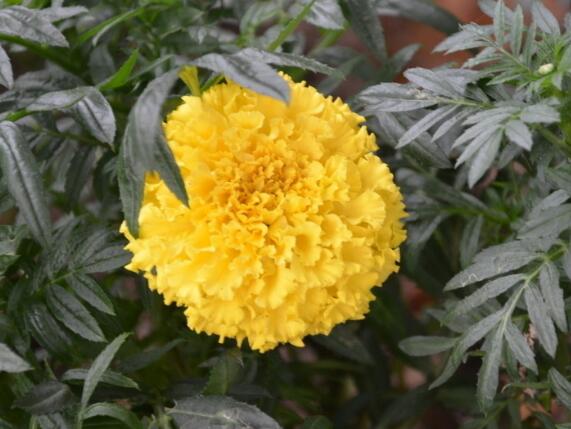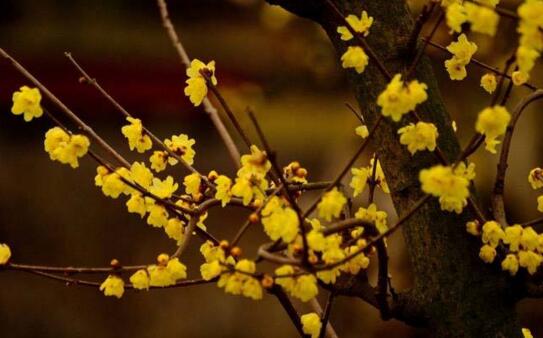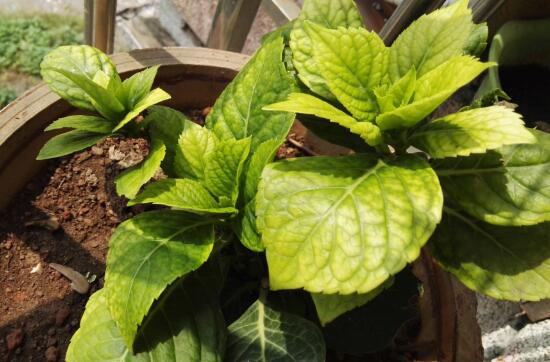How to fertilize marigold, matters needing attention in fertilization / dilution before fertilization
Among the efficacy and function of marigold, its ornamental value is the most familiar to people, but if you want it to be ornamental, the maintenance process must be careful, among which fertilization is the most important. Fertilizer is the main nutrient in the growth process of marigold. Sufficient fertilizer is needed to make marigold blossom, so how to fertilize marigold? Next, the editor will take you to learn about it.

How to fertilize marigold
On how to fertilize marigold, in fact, each period is different, and there are many places that need to be paid attention to, the choice of fertilizer should be correct, and secondly, the demand for fertilizer of marigold is also different in different periods. Under specific circumstances, the article has a detailed explanation. Let's move on.
1. Fertilizer selection
When fertilizing marigold, the first thing we need to know is the choice of fertilizer in each period. when sowing, we need to apply a little organic fertilizer in the pot soil, which will be beneficial to the germination of marigold seeds and nitrogen fertilizer during the growing period. this will make it grow more healthily.
two。 Fertilization at seedling stage
About how to fertilize marigold in seedling stage, the proportion is very important, and the fertilization must be uniform, otherwise it is easy to lose fertilizer in the later stage, and the deep application of base fertilizer should be achieved when fertilizing marigold in seedling stage.
3. Fertilization in growing period
With regard to how to fertilize marigold during the growing period, we need to remember that thin fertilizer is applied frequently, the growing period is the period when marigold needs nutrients most, there is enough fertilizer to make it grow rapidly, and liquid fertilizer is basically needed once a month during this period.
4. Fertilization at flowering stage
With regard to how to fertilize marigold during flowering, the time of fertilization is the key point, and it is best to choose to apply fertilizer in the evening. If it is a flower with a growing area of marigold, it needs to be turned over to fertilize, so that marigold can be better absorbed.
II. Matters needing attention in fertilization of marigold
The above tells you how to fertilize marigold in different periods, and then let you know what you need to pay attention to when applying fertilizer. First of all, when fertilizing, it must not be applied to the plant itself, so it will burn the plant, generally applied in the soil, and then the fertilizer must be diluted with water before fertilization, so that marigold can be better absorbed.
How to fertilize marigold, what kind of fertilizer?
Marigold, also known as stinky hibiscus, belongs to the annual herbaceous Compositae plant. Marigold is often sown in spring. Because of its large flowers and long flowering period, it is often used in flower bed settings. Marigold can also be used as home furnishings, showing a romantic and charming home style. Today, the editor will share with you how to fertilize marigold, what fertilizer?
Fertilization methods of marigold:
The main results are as follows: 1. Marigold is not strict with the soil. The soil with deep, loose, draining and breathable soil should be selected, and fertilization should be carried out with a small number of times.
2. Marigold should be fertilized outside the root when the flowers are in full bloom, and the best spraying time is after 6 o'clock in the afternoon.
What kind of fertilizer does marigold apply:
Marigold fertilization should pay attention to the combined use of nitrogen, phosphorus and potassium, today Xiaobian recommended a better fertilizer-Chenfeng biological flower special fertilizer, fertilizer nutrients are more complete, the soil permeability is better, fertilizer effect is long, soil improvement, the use of Chenfeng flower organic fertilizer can be diluted with water, can also be shallowly buried around the marigold plant, avoid the rhizome, so there will be a better fertilizer effect.
The fertilization method of marigold is shared with you here, and the editor once again reminds you to pay attention to scientific fertilization to prevent the occurrence of fertilizer damage.
Prevention and treatment of marigold quenching disease
The scientific name of marigold quenching disease is Pythium aphanidermatum (Kds.) Fitzp. The disease is common in marigold production and does serious damage. It is one of the important diseases of flowers.
Symptom
The disease belongs to a kind of seedling disease, which leads to rotten seed before it is unearthed; when the root or stem base is unearthed, it will produce waterlogged disease spot, yellowish brown constriction, seedling wilting and quenching, and white woolly hair will grow on the disease part and soil surface in the environment of high humidity, the course of disease is short and the disease occurs rapidly.
Pathogen
The disease is originally called Pythium melons. The hyphae are colorless, septate, and produce sporangia. The sporangia are dilated tubular, branched or unbranched, resulting in vesicles. There are many zoospores in the vesicles. The zoospores are kidney-shaped, with 2 lateral flagella and 12 ~ 17 × 5 ~ 6 (um). The state produces oospores, spherical, suspended in the egg-storing apparatus.
Characteristics of the disease
The pathogen overwintered as oospores in the soil, produced zoospores under wet conditions, zoospores germinated to produce germ tubes, and oospores germinated directly to produce germ tubes when dry. The pathogen invaded directly from the base of the seedling or through the wound, and then produced sporangia after the disease. the sporangia germinated and produced zoospores, which were transmitted by zoospores and germinated into germ tubes for re-infection. Stunting disease is easy to occur under the condition of high humidity (12 ℃ / 23 min). After sowing, the host resistance is often affected because the temperature is not high, and the pathogen is suitable for a wide range of temperature, so the disease is easy to occur. In spring and summer, too much Rain Water, poor drainage of ditches, stagnant water in nursery land and too wet seedling bed will cause bacteria to spread in the soil, and sudden disease is easy to occur.
Prevention and cure method
The main results are as follows: (1) strengthen cultivation management, rational fertilization and irrigation, improve seedling resistance, adjust ventilation and light, pay attention to drainage measures in rainy season, timely drainage after rain, maintain proper temperature and humidity, so as to ensure that the seedling field is not waterlogged, in order to loosen and aerate the soil in the nursery, weed, inter-seedling and remove diseased seedlings in time. Reduce the incidence of germs.
(2) when the seedbed is too wet. 50Mu can be used for 75 kg of screened plant ash or fiery soil ash, which plays a double role.
(3) for chemical control of the tender stage of seedlings, 20 kg of lime powder and 80 kg of plant ash can be mixed evenly, and 100ml 150 kg per mu can be applied. After that, spray 0.5% Bordeaux solution every 10 days. After the onset of the disease, the disease can be prevented and treated by spraying with 500 Mel 800 times diluted solution of Dexong, Topurazine and Chlorothalonil, once every 10 days, continuously for 3 times.
- Prev

How to raise Prunus mume blossom, breeding methods and precautions / Seven tricks must be learned
Most plants blossom after the branches and leaves, but the Lamei blossom is different. It blossoms first and then leaves, and it can survive the winter safely even in the environment of-15 ℃. So how can the Lamei blossom look best? Today, let's take a look at the culture methods and matters needing attention of Lamei blossoms.
- Next

What to do if the leaves of hydrangea turn yellow, control watering, fertilize properly / adjust the acidity and basicity of the soil
Hydrangea, a very beautiful flower, is rich in design and color, and many flower friends plant at home. However, many novice in the process of raising hydrangea, will encounter hydrangea leaves yellowing, thus greatly reducing the ornamental value of hydrangea, then what to do at this time? To this
Related
- Fuxing push coffee new agricultural production and marketing class: lack of small-scale processing plants
- Jujube rice field leisure farm deep ploughing Yilan for five years to create a space for organic food and play
- Nongyu Farm-A trial of organic papaya for brave women with advanced technology
- Four points for attention in the prevention and control of diseases and insect pests of edible fungi
- How to add nutrient solution to Edible Fungi
- Is there any good way to control edible fungus mites?
- Open Inoculation Technology of Edible Fungi
- Is there any clever way to use fertilizer for edible fungus in winter?
- What agents are used to kill the pathogens of edible fungi in the mushroom shed?
- Rapid drying of Edible Fungi

